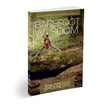Grounding, also known as earthing, has been practiced for centuries. However, it has only gained serious focus from the science and medical communities over the past two decades.
Now, science is taking a closer look at this practice and its benefits for various conditions. Including recent findings around diseases as well.
Grounding is the technique of channeling the earth’s natural energy, called electrons, through direct bodily contact. This can be achieved by walking barefoot on soil, grass, or sand.
Touching the earth—including rocks, plants, and trees, with bare hands, or immersing yourself in a natural body of water such as an ocean, stream, or lake. All will have a tremendously positive impact on your overall health.
According to Dr. Andrew Weil, one of the foremost and renowned pioneers in integrative medicine, electrons are drawn into the body, neutralize harmful free radicals and strengthen our systems.
We know there is interest in the benefits of grounding and understand that there is just as much skepticism. This post looks at some of the most common grounding-related myths that continue to persist and set the record straight.
Myth 1: Science does not support the practice of grounding.
We get that many of the principles and practices behind grounding may sound a little far-fetched. As more data is being collected and analyzed, there is clear science behind it.
Generations ago, people spent more time outside, whether working on a farm, doing home construction or other physical labor, or cooling off on a hot summer’s day. There were fewer barriers between the human body and earth’s natural surface—less thick-soled and synthetic shoes, layers of clothing, and time spent indoors, out of the sun and fresh air and its rejuvenating properties.
Grounding practitioners widely believe that this lack of contact between our bodies and the earth’s natural surface leads to a host of health issues, from depression to cardiovascular disease. This Healthline article explains the basics of grounding and discusses how it has given some relief to people with a range of conditions.

Myth 2: Grounding does not offer any health benefits.
There is a growing body of scientific evidence backing up the theory that a lack of contact with the earth’s natural surface and the flow of its electrons into the body is leading to more physical and mental health issues.
Science is taking a closer look at the human body/nature relationship, and there is more scientific proof showing the many benefits that come from direct contact with the earth.
Grounding is also showing promise as an effective method for managing inflammation and heart disease, among other conditions.
As Dr. Stephen Sinatra, a pioneer in the arena of grounding and a cardiovascular vascular doctor and author, explains in this article, our bodies absorb negatively-charged electrons from the earth, which neutralize the number of free radicals in our bodies. The result is thinner blood which flows more easily.
For people with cardiovascular disease, their blood is thicker and has a more difficult time pumping throughout their system. Another study by the National Center for Biotechnology examined grounding’s effects on patients with chronic inflammation.
Myth 3: You always need special equipment to practice grounding.
If you are practicing grounding outdoors, you do not need any unique products. You can put your feet right on grass, sand, a rocky lakefront, and feel the soil between your fingers (this is why gardening is so therapeutic). You can immerse yourself in water, such as the ocean, a bubbling brook, lake.
When the weather reaches sub-zero temperatures in the middle of winter or lives in an urban area with limited green space, it’s harder to practice grounding outside.
Several companies are emerging that carry moccasin style shoes with pure leather soles (a conductive material) made with strappy sandals that are grounding. These are highly seasonal and only for very casual or sporty wear. New to the scene is HARMONY783, featuring biomechanically correct real footwear. Made with special patented technology, these shoes allow the wearer to channel the earth’s energy indoors on concrete or unsealed tiles floors and outdoors on grass, sand, soil, bricks, stone, and concrete.
Myth 4: Grounding does not help mental or emotional conditions.
Grounding does not just help with physical ailments. Scientists are also learning more about the benefits of grounding for mental or emotional issues like anxiety, depression, and stress. Grounding can also help keep these disorders in check because the techniques rely on being present and the body’s physiological benefits returning to a more normalized state of homeostasis.
Also, concentrating on your surroundings, tapping into the five senses, and merely shifting focus from the constant inner dialogue to something real and tangible can have tremendous benefits.
This article from PositiveThinkingMind further discusses the connection between grounding and anxiety and offers tips to get started.
Myth 5: Grounding takes a long time to work.
You can practice grounding for as little as 20-30 minutes a day. There is no set timeline for grounding’s long-term effectiveness—everyone is different. It may take longer for a person with a chronic condition to notice significant improvement.
Someone merely practicing grounding for an energy boost or to lift their mood may feel better right away or after a session or two. Results vary from person to person. It’s important to know that getting grounded is subtle energy; you won’t get a jolt so to speak.
It also requires constant refueling – like a gas tank. Once your body is attuned to getting grounded, however it is reported, the easier it is to feel the benefit.
Grounding has been around for centuries and is only being studied in greater depth and becoming more mainstream. It is a simple and effective way to manage one’s health and a great reason to spend more time in nature!






















